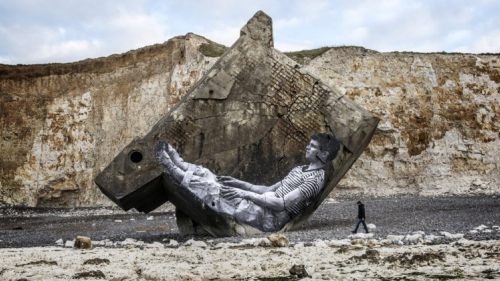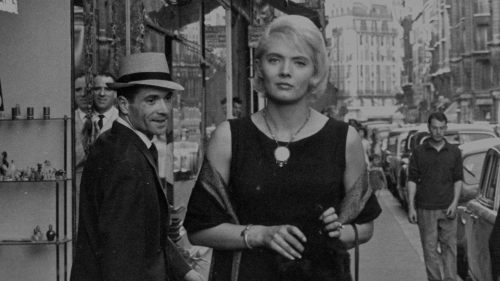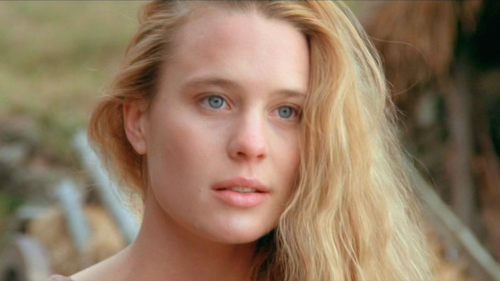Broad Cinema: BREAKFAST AT TIFFANY’S And The Most Important Little Black Dress Of All Time
From Alice Guy-Blaché to Ava Duvernay, women have been integral to cinema for the last 120 years. Broad Cinema is a new column that will feature women who worked on films that are playing this month at the Alamo Drafthouse. From movie stars to directors, from cinematographers to key grips, Broad Cinema will shine a spotlight on women in every level of motion picture production throughout history.
For April we are celebrating Breakfast at Tiffany's, which is playing at select Alamo Drafthouses this month. Get your tickets here!
Going to an all-girls high school in the early 2000s, no film captured the imagination of my classmates more than Breakfast at Tiffany’s. Images of Hepburn with a cigarette holder, wide-brimmed hat in her now iconic little black dress adorned wallets, notebooks, and backpacks. Many of my classmates begged parents for Tiffany’s charm bracelets, bringing them just a little closer to their silver screen star. There would be viewing parties where girls would swoon and imagine themselves eating croissants in a black evening gown like Holly Golightly (Audrey Hepburn). Even then I was struck by how much more swept up they were with Holly’s luxurious ambitions than her loneliness or tragedy - but maybe that was the point.
In 2006, Audrey Hepburn’s Little Black Dress from Breakfast at Tiffany’s was auctioned off for £410,000 at the Christie’s auction house in London - the largest amount ever spent on a film garment. Designed by frequent Hepburn collaborator and esteemed French designer, Hubert de Givenchy, the costume has been hailed as the most iconic film costume of the 20th century. Made of Italian satin, Christie’s described the dress as a “sleeveless, floor-length gown with fitted bodice embellished at the back with distinctive cut-out décolleté, the skirt slightly gathered at the waist and slit to the thigh on one side.”
Givenchy and Hepburn first met in 1953 during the shooting of Billy Wilder’s Sabrina. They would maintain a professional and personal relationship until Hepburn’s death in 1993. Dressing her both onscreen and off, Givenchy described their mutual appreciation as “a kind of marriage” and has recently dedicated a book to her. Their most iconic collaborations include memorable designs in films like Funny Face, Charade, and Breakfast at Tiffany’s. His preference for simple but innovative designs put him at the forefront of a new era in fashion. His tastes aligned with those of Hepburn who preferred understated designs over ostentatiousness, her lithe long-limbed figure particular suited for a fashion that drew more on the future than on the more conservative style of the post-war period.
Outside of period pieces, which even then are only discussed in terms of authenticity, costume design rarely gets treated as a narrative tool. We admire the costumes we would wear and deride those that seem silly or outdated. Even in the case of a costume as famous as Holly Golightly's in Breakfast at Tiffany’s, the costume is treated more for its iconic lines rather than its context.
Unlike many of Givenchy and Hepburn previous collaboration’s, Holly’s little black dress is treated as a costume within the film - a kind of sartorial “fake it till you make it”. In one of the film’s most iconic moments, the titular breakfast at Tiffany’s, there is a hint that Holly’s deception has been unveiled. The black evening gown more suited to a cocktail club or a ball feels out of place in the morning sun, which hints at the layers of Holly’s lies to the world and to herself. Yet, she maintains her grace.
The little black dress has long been credited with a Coco Chanel creation. French in origin but American in spirit, many believe a 1926 Chanel spread in American Vogue was the popularizing “moment” of this ubiquitous fashion staple. The dress, simple and easily adapted to trends, has impressed upon the wearer’s sophistication and modernity. Over nearly a century, it has gone through a number of transformations relatively unscathed. No fashion season discussion is complete without discussion of the most essential little black dresses on the runway - reflecting on its classic status and its infinite variability.
The costume of the little black dress has long come to represent an escape from insecurities and the mundane. Accessible to just about anyone with infinite variations, the little black dress comes with the promise that when you put it on all your anxieties will peel away - you will be suddenly imbued with an impenetrable elegance. It doesn’t matter if you are living in a crummy apartment and that your romantic dreams are shattered, for just one evening (or a breakfast) you can slip into another life.
The 1960s represented a turning point in fashion and the little black dress. As the decade wore on, a growing youth movement pulled away from the structured fashions of the past. Released in 1961, aside from some not-so-casual racism, Breakfast at Tiffany’s looked like a film of the present. Audrey Hepburn with a face and a presence that seemed out of time embodied with charming grace and bubbly girlishness, she presented a challenging portrait of a young woman trying to build the life that she imagined.
Drawing deeper into the recesses of Givenchy’s history as a young designer, his own career was forged as much by his talents in design were in his preference for cheap and affordable materials. Designers like him made high fashion a little more accessible to women across class boundaries, women like Holly.
Things don’t always work out for Holly but there is something renewing in the idea she can rebuild or reshape her ambitions. The enduring appeal of the film is very much centered around this idea and in particular, the importance the little black dress has within this narrative. It’s appeal to young women, in particular, is this refuge in the ability to dress up and become the person you want to be. The film taps into a young woman’s wistfulness for escape, this desire to be anyone but yourself, while also acknowledging the perils that come with that choice.



